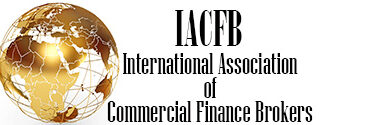
All business finance consultants and brokers know all about factoring and its financing fundamentals inside and out. We know its powerful capabilities when it comes to providing cash flow solutions to many B2B business owners. We know that in a typical factoring arrangement, a supplier of goods or services provides those goods or services to its customers and those customers typically enjoy liberal payment terms of say, 30 to 90 days, before payment is actually due. Of course, that terms of payment delay is the “root of all evil” when it comes to causing a serious cash flow problem for the supplier. Invoice factoring can solve that problem and does so literally worldwide.
So…in a standard factoring transaction, a supplier will be the party that contacts a factor to purchase it’s invoices and speed up it’s cash flow. In factoring terminology, that invoicing entity is the factor’s client. The payor for the invoice related to those goods or services is the account debtor or the customer.
A Traditional Factoring Example vs. Reverse Factoring
For example, in a construction-based transaction, a sub-contractor that has provided services, such as electrical work in a new building, submits an invoice for payment to the general contractor on the job. The general contractor is required to pay the electrical contractor for the work, however, the general contractor often must wait to get it’s progress payment from the bank or funding company on the project before it can actually have the funds to pay the electrical sub-contractor. This delay, of up to 60 or even 90 days can cause serious cash flow problems for the electrical sub-contractor. By a factor immediately purchasing the invoices of the sub-contractor when the work is done, the sub-contractors cash flow problem is solved. It is now the factor who waits for the general contractor’s payment. Through its sale of invoices to the factor, the sub-contractor now has adequate capital to operate. That example is traditional factoring in a nutshell.
the sub-contractor when the work is done, the sub-contractors cash flow problem is solved. It is now the factor who waits for the general contractor’s payment. Through its sale of invoices to the factor, the sub-contractor now has adequate capital to operate. That example is traditional factoring in a nutshell.
Reverse Factoring is a mirror image of the traditional arrangement involving the client / customer relationship, at least from the conceptual side of the equation. This arrangement is often called supply chain finance and in this equation, it is the customer of the supplier, the company required to pay the invoices, that contacts the factor to arrange for early payment to it’s suppliers. For many large businesses and corporations, managing accounts payable on invoices and avoiding late payments to important and valuable suppliers can become a challenge and this is true for even the most creditworthy of manufacturers and retailers. To avoid this, one solution that many creditworthy large businesses often have turned to is reverse factoring.
How Exactly Does Reverse Factoring Work
As mentioned, unlike a traditional factoring arrangement where a goods suppling or services providing business owner will contract with a factor provide early cash payment, in a reverse factoring arrangement…
- a buyer, through the normal course of business, purchases goods and services from its suppliers
- the buyer not the supplier, requests the services of a factor.
- the buyer is still sent normal invoices from its suppliers. The buyer subsequently reviews invoices for accuracy and validity
- the buyer then requests that early payment from the factor be made on invoices it approves AND for those suppliers that requested the early payment option
- as is customary, the supplier contracts with the factor and typically is charged a factoring fee for the early payment
- the factoring fee is very low, due to the exceptional creditworthiness of the large buyer
- the buyer then pays the factor the face value of the invoice on the arranged invoice terms of payment date
The key to establishing a reverse factoring arrangement is the creditworthiness of the buyer. By definition, such arrangements are considered a transaction which can involve issues of concentration risk, since the factor’s advances of capital to all of the various suppliers opting for the service, are to be repaid by a single entity, the buyer. The buyer, therefore, must be of stellar credit and in most transactions, the buyer will be a relatively large company.
Benefits of Reverse Factoring
There are many benefits to establishing a reverse factoring arrangement for the supplier, the buyer, and also for any intermediary or broker / consultant if one is involved.
For the Supplier (Client)
- Lower Funding Costs: Suppliers could naturally set up their own factoring arrangement…but the fees charged by the factor would be based on the supplier’s own credit. In a reverse factoring arrangement, the factoring fees are still paid by a supplier, but are usually much less, since the creditworthiness of their large, more financially sound buyer will affect the fee arrangement.
- Increased Working Capital: Just as in a traditional factoring arrangement, the supplier’s invoices will be paid immediately rather than being forced to wait 45, 60, 75 days or longer. The supplier’s working capital position will improve.
- Inventory Replacement: If inventory is involved, the immediate payment by the factor on the delivered product means that new inventory and raw materials can be ordered and will replace the depleted more quickly. In fact, and in some cases, an additional benefit from cash discounts can be had by the supplier which can offset the costs of factoring.
- Reduced Administration: The supplier’s accounting personnel will no longer need to make collection calls to request “early payment” from its valuable buyers due to “special circumstances” and working capital shortfalls.
For the Buyer (Customer)
- Increased Working Capital: As with suppliers, funding by the factor can significantly increase working capital. This is especially true for manufacturers with occasional delays in receiving key components required in the manufacturing process
- Payment Flexibility: Bulk invoice payments to the factor when unforeseen interruptions in the supply chain present themselves, provide the buyer with flexibility.
- Better Relationship with Suppliers: Buyers can establish much better relationships with their suppliers and the early payment can sometimes lead to better pricing on services and components.
- Less Administrative Work: Buyers are now paying a single financing entity, the factor, rather than dozens and dozens of individual suppliers.
Benefits for the Consultant
For savvy consultants and brokers, being well-versed in the uniqueness of occasional reverse factoring transactions that present themselves, mean that landing such deals can increase your commission business exponentially. In most cases, establishing the reverse factoring transaction will mean the factor will be creating many new supplier clients of which you will be broker of record. The importance and benefits of this transactional factoring style cannot be overestimated. Although the commission revenue you will earn will be based on factored invoices of a very creditworthy single buyer with lower factoring fees, once the various suppliers of that buyer are introduced to the factoring concept and its many benefits, most will begin factoring ALL of their invoices for other customers. For brokers and consultants, this can grow your commission revenue dramatically.
So in short, you should understand the considerable benefits of reverse factoring (supply chain finance) to all parties. All consultants should constantly be on the look out for opportunities that present themselves to discuss this concept to your larger, creditworthy prospects.
Comment on This Article or Subscribe
Want to comment on this article? Visit the IACFB’s LinkedIn Group for independent brokers and post your comment. Additionally, we have a sample marketing campaign with cover letter and selected mail stuffer in Factoring 202 at the Campus Academy.
Want to subscribe to more great content for consultants and brokers, click here to subscribe.




